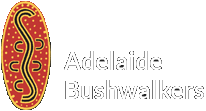Autumn nights are cooler and longer than summer, so the autumn skies will be on display before the weary walker hits the sleeping bags. This year there is a subtle penumbral lunar eclipse and some planet hijinks to brighten up the autumn night.
The nights of the autumnal Full Moons are Wednesday March 23, Friday April 22 and Sunday May 22. While nights on and around the full Moon are great for not tripping over things in camp, or night walks, they wash out the magnificent canopy of stars.
On Wednesday March 23 there will be a penumbral lunar eclipse. In contrast to the more spectacular total or partial lunar eclipse, where the Moon is either fully or partially immersed in Earth’s shadow, observers will only see a subtle darkening of the southern part of the Moon’s disk. From 8:07 pm ACDT the Moon will start to slightly darken. At 10:17 pm ACDT the Southern part of Moon will be faintly but visible darker than the rest of the Moon. It does not disappear however; it shines with a coppery glow, a burnished coin set amongst the stars. After a scant 6 minutes Earth’s shadow slips off the Moon and it slowly reappears again.
Three bright planets grace the autumn skies, Jupiter, Mars and Saturn. Jupiter is the brightest object in the evening sky. There are few bright stars near it, and Jupiter is almost exactly between two white stars, Regulus (the brightest star in the constellation Leo) and Spica (the brightest star in the constellation Virgo. While Venus (and the Moon and Sun of course) is brighter than Jupiter, Venus graces the morning sky. Jupiter is visible above the north-eastern horizon at the start of autumn, easily recognisable by its brightness and its warm yellow colour. It is at opposition on March 8th, when it is biggest and brightest as viewed from Earth, but it will be magnificent for most of autumn.
In case you have difficulty deciding which bright object is Jupiter, on March 22, April 18 and May 15 the waxing Moon is close to Jupiter. If you have binoculars with you, Jupiter’s Moons are easily seen in even small binoculars. As autumn progresses, Jupiter moves from the north-eastern to northern then north-western skies.
During autumn the summer constellations of Taurus, Orion and Canis Major sink lower on the western horizon. Orion vanishes around mid-autumn. At the same time, Orion’s nemesis, Scorpius the scorpion, rises in the east. The distinctive curled question mark of Scorpius is very easy to pick out. The body of the Scorpion, the stem of the question mark, contains the bright red star Antares the “rival of Mars”. But you will see another bright red object to the left of the three bright stars that mark the end of the question mark. This is Mars itself.
Mars starts autumn in Libra, the Scales, but in old star charts this was the claws of Scorpion, indeed the names of the brightest stars of Libra, Zubenelgenubi and Zubeneschamali, mean right and left claw. These days many new star charts show the three stars which made the head of the Scorpion (Graffias, Dschubba and pi Scorpii) as the claws. During March Mars moves away from Zubenelgenubi and Zubeneschamali and heads towards Graffias, on the 16th Mars will be less than half a finger-width from this star. Graffias also means “claw”, so for the first half of March Mars will be in the claws of the Scorpion.
After this, Mars heads towards Antares. It is closest by 26 April, and then reverses and heads back towards Graffias, coming close again on May 16 (but not as close as on March 16). Mars dramatically brightens during autumn, and is at opposition on May 22nd. For those of you with telescopes, a week either side of opposition even a small telescope will show Mars as a visible disk, with a hint of polar caps and markings.
By mid-March Saturn is rising before midnight. It is the golden yellow object underneath red Antares. Saturn doesn’t move much, although it brightens subtly as it approaches opposition in June.
However, Mars, Antares and Saturn form a nice triangle in the sky. During autumn the triangle first becomes shallow, then elongates again as Mars approaches, then recedes from, Antares.
The Moon visits Mars on 1 March, 28 March 24 April, and 21 May. The Moon visits Saturn on 3 March, 29 March, 25 April and 22 May. At these times the patterns formed by the Moon, Saturn, Mars and Antares are rather nice.
Venus and Mercury are visible together in the early autumn skies, but Mercury is rapidly lost to view. Venus remains the brilliant morning star, easily visible in the twilight, for March and April, but is rapidly lost to view in May as it sinks into the dawn glow.
The crescent Moon joins Venus for some attractive morning views on 7 March, 6 April and 6 May.
Autumn brings another opportunity to see the constellation of the Emu. This indigenous constellation is made up of dust clouds and the dark right of the Milky Way, and it is really only visible under the dark skies of the bush. It is best seen around mid-autumn, when its distinctive shape is high enough to see before midnight.
Looking south, the Southern Cross and the two pointers are obvious around midway between the zenith and the horizon. The coal sack nebula, a dark area clearly visible under dark skies between the Cross and the Pointers, is the Emu’s head. The dust lanes below the pointers form the Emu’s neck and the dust lanes around the curl of stars that marks Scorpius’s tail is its wings and body. Once seen this “dark constellation” is obvious.
[the_ad_group id=”151″]

Comments (0)